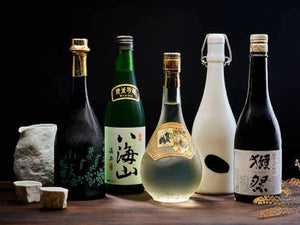
What is Nama Sake?
Nama sake (生酒) refers to unpasteurized sake. Unlike regular sake, which undergoes pasteurization to kill off bacteria and enzymes, nama sake skips this step, resulting in a fresh, vibrant, and sometimes slightly effervescent drink. This type of sake often has a bold, fruity, and lively flavor profile, making it quite distinct from pasteurized sake.

Key Characteristics of Nama Sake:
-
Freshness: Nama sake has a fresh and raw taste because it retains the enzymes and microorganisms that are typically removed during pasteurization.
-
Flavor Profile: It often exhibits bright, fruity, and bold flavors with a lively mouthfeel. Some nama sake can have a slight carbonation.
-
Storage: It needs to be kept refrigerated at all times to prevent spoilage and maintain its freshness.
-
Shelf Life: Nama sake has a shorter shelf life compared to pasteurized sake and should be consumed relatively quickly after purchase.
Types of Nama Sake:
-
Namachozo (生貯蔵酒, Nama Chozo-shu): This sake undergoes pasteurization once, typically after fermentation.
-
Namazume (生詰め酒, Namazume-shu): Similar to nama chozo, namazume is pasteurized once but typically after storage for a period..
-
Namazake (生々): Also known as "nama nama" or "hon-nama,". This is the purest form of nama sake, undergoing no pasteurization at all. It boasts the most lively flavors and aromas but also has the shortest shelf life (just a few weeks) and needs to be kept refrigerated constantly.
Serving Suggestions:
- Chilled: Nama sake is best enjoyed chilled to preserve its fresh and lively flavors.
- Food Pairings: It pairs well with fresh and light dishes like sashimi, sushi, salads, and lightly cooked vegetables.
Due to its delicate nature, nama sake offers a unique and refreshing experience for sake enthusiasts seeking something different from the traditional pasteurized varieties.

